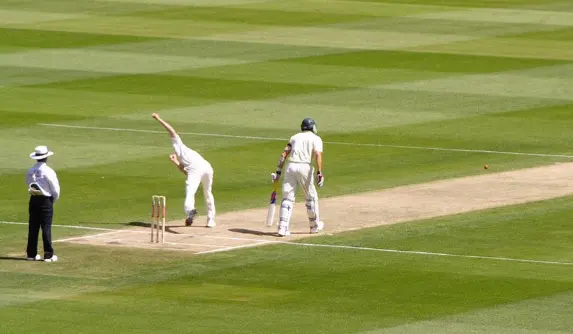An Umpire is an individual whose responsibility it is to take decisions on the field, apply the rules and to ensure the match is played according to the Laws of Cricket. Cricket umpires have an important role to play in ensuring fair play and application of the game laws. It takes knowledge, training, and certification to become an umpire. The following is a step-by-step guide to becoming a cricket umpire, their wages, categories of umpires, requirements for eligibility.

An umpire is the key authority on the cricket field, responsible for making real-time decisions, enforcing the MCC Laws, and ensuring fair play. To become a certified umpire, you need a solid understanding of the game, formal training, and official certification. Most start by joining courses offered by their national cricket boards. Here are the basic steps to become a cricket umpire:
1.Know the Laws of Cricket
Develop comprehensive knowledge of all 42 MCC regulations, including modern applications like DRS protocols and concussion substitute rules.
2.Be a Member of a Local Cricket Association
Register with your national cricket board's umpiring program to access training resources and mentorship opportunities.
3.Do an Umpiring Course
Progressive training includes both classroom instruction and supervised match simulations, typically spanning several months.
4.Qualify Written and Practical Examinations
Demonstrate your knowledge through written tests and practical assessments of decision-making under match conditions.
5.Begin Officiating Local Matches
Begin with junior or amateur games to develop real-world experience before progressing to higher levels.
6.Progress Through the Higher Levels
Consistent performance can lead to selection for regional, national, and ultimately international panels.
The England and Wales Cricket Board (ECB) and the Board of Control for Cricket in India (BCCI), for example, have umpiring programs that involve theory tests, practical assessment, and in-match training.
The earnings of an Umpire depend on different things like their experience, the type of match they are judging and the governing body.
Top-Tier Umpires: The top class umpires of the ICC can make from $80,000 to $200,000 per year. This includes their annual salary and the match fee like for Test match $5000 for an ODI match $3000 and for a T20 match their fee is $1500.
Also Check: ICC Elite Panel Cricket Umpires Salary 2025
Domestic Umpires: Their salaries also depend on a lot of things like the country they are playing in and others, but generally they can earn from $10,000 to $50,000 per year.
IPL: In top class leagues like this an umpire can earn around ₹1.75 lakhs, even the fourth umpire can make up-to ₹25,000.
There are four types of umpires in cricket:
On-field umpires: Those who provide live decisions like LBWs and no-balls.
The third umpire: The one who decides close calls using DRS and replays.
Fourth umpire: He is the one who is in charge of substitutes and match arrangements.
Match referee: keeping check on fair play and issuing penalties off the field.
The requirements differ slightly from board to board but generally include:
Age: At least 18–21 years (country-dependent).
Knowledge: Comprehensive knowledge of cricket laws.
Fitness: Moderate fitness to stand for long periods.
Certification: Successful completion of umpiring courses (e.g., BCCI Level 1, ECB ACO).
Experience: Prior playing/coaching experience is preferred but not necessary.
Q: What is the minimum age for cricket umpire?
A: 18 years.
Q: What are the top cricket umpires in the world?
A: There are many but notable names are Richard Illingworth, Nitin Menon, Kumar Dharmasena, Aleem Dar.
Q: What's the most challenging decision?
A: Marginal LBW calls requiring DRS review test an umpire's skills most.